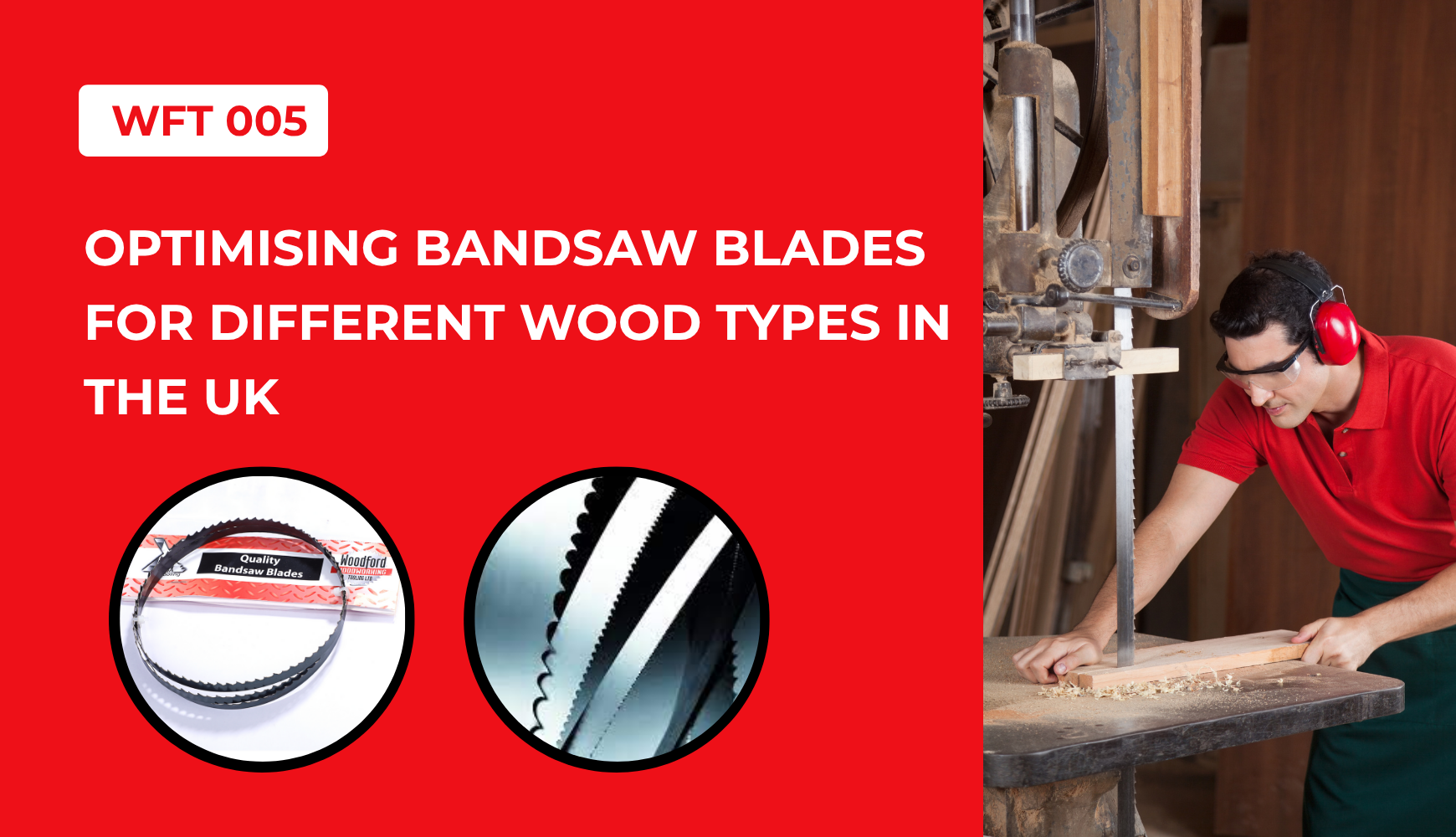
Blog 005: Optimising Bandsaw Blades for Different Wood Types in the UK
Optimising bandsaw blade performance for the diverse range of timber species in the UK demands a considered approach. Understanding the relationship between blade design, wood characteristics, and cutting parameters is vital for ensuring both efficiency and longevity. This guide offers practical insights tailored specifically to the UK woodworking sector, enabling professionals and enthusiasts alike to achieve superior results across hardwoods and softwoods.
Understanding the Characteristics of British Timber
Common UK Hardwoods
British hardwoods are renowned for their density and durability. Among them:
●Oak, particularly English Brown Oak, is notably dense (up to 740 kg/m³), requiring a robust blade and slower feed speeds.
●European Ash (710 kg/m³) is favoured for its elasticity and bending qualities.
●European Beech ranges from 700–900 kg/m³, offering excellent machinability and surface finish—ideal for furniture makers.
UK Softwoods
Softwoods grown in Britain, while easier to cut, present their own challenges:
●Sitka Spruce is lightweight (approx. 450 kg/m³) and widely used in structural applications.
●Scots Pine (510 kg/m³) is a staple in construction.
●Douglas Fir offers a balance of strength and workability at around 530 kg/m³.
TPI Selection Based on Timber Type
The number of Teeth Per Inch (TPI) is central to blade performance:
●Softwoods: Use 3–6 TPI for quicker chip removal. This is ideal for fibrous materials such as Sitka Spruce and knotty pine.
●Hardwoods: Require a more precise approach:
○For thicker stock of Oak or Beech: 4–6 TPI
○For finer cuts: 6–10 TPI, maintaining 3–6 teeth in the cut at any time
Click here to check wide range of bandsaw blades in our store.
Tooth Geometry Recommendations
Skip Tooth Blades
Ideal for softwoods and aggressive resawing, these blades prevent clogging thanks to deep gullets and wide spacing.
Hook Tooth Blades
Best suited for hardwoods, these feature a positive rake (typically 10°), allowing smoother entry into dense materials.
Regular Tooth Blades
Deliver the cleanest finish, suitable across all species. Higher TPIs (up to 14) require slower feed rates but reward users with exceptional surface quality.
Blade Material Guidance for the UK Market
|
Timber Species |
Density (kg/m³) |
TPI Range |
Recommended Blade Type |
|
Sitka Spruce |
450 |
3–4 |
Skip Tooth |
|
Scots Pine |
510 |
3–6 |
Skip or Regular |
|
Douglas Fir |
530 |
4–6 |
Regular |
|
European Ash |
710 |
4–8 |
Hook or Regular |
|
European Beech |
720+ |
6–10 |
Hook |
|
English Oak |
740+ |
6–12 |
Hook |
Carbon Steel
Affordable and reliable for general use. UK-made blades such as the Charnwood BB38 offer hardened teeth, ideal even for embedded nails in reclaimed wood.
Bi-Metal Blades
These offer longer life and superior edge retention, suited to environments where frequent blade changes are inefficient.
Carbide-Tipped
Recommended for intensive use and dense hardwoods. Their resistance to wear makes them ideal for commercial or industrial applications.
Optimising Feed Rate and Energy Use
Feed Rates
●Beech: Optimal cutting speeds fall between 15–40 m/min for widths of 0.12–0.57m.
●Oak: Similar rates due to comparable density.
●Pine: Can be cut faster, but performance depends on moisture content.
Power Efficiency
Energy usage varies between species. Efficient sawing maximises gullet filling while keeping sawdust expansion (1.7–1.9x wood volume) consistent.
Blade Setup and Maintenance
Tensioning
Correct blade tension ensures straight cuts and prolongs lifespan. Use dedicated tension meters rather than relying on built-in bandsaw gauges.
Tracking
After setting tension, recheck alignment. Poor tracking can lead to blade fatigue and imprecise cuts.
Routine Maintenance
●Cleaning: Prevents debris build-up and reduces friction.
●Inspection: Look for cracks, chips, or dull edges regularly.
●Sharpening & Lubrication: Use quality sharpening tools or professionals. Apply lubricants as per manufacturer instructions to extend lifespan.
Economic Considerations for UK Users
●Carbide Blades: Though initially costly, they offer long-term value for high-volume hardwood cutting.
●HSS Blades: Ideal for occasional or low-duty use, especially on softwoods.
●Local Supply: Choosing UK-made products ensures quicker delivery, reduced downtime, and access to technical support—essential in a post-Brexit economy.
Implementation Tips for British Woodworkers
●Establish a blade inventory based on commonly processed species.
●Use variable pitch blades for mixed material operations.
●Maintain cutting logs to refine and repeat successful settings.
●Train team members in proper blade selection, tensioning, and safety.
Conclusion
For UK woodworkers, mastering bandsaw blade optimisation begins with an understanding of local timber and an appreciation for the correct tooling. From English Oak to Sitka Spruce, every wood presents unique demands. By aligning blade type, tooth geometry, and operational parameters, craftsmen can achieve cleaner cuts, extend blade life, and reduce operational costs—resulting in a smoother, more efficient workflow across the board.
